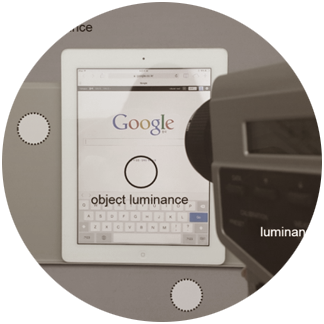Nooree Na, a Ph.D. candidate of CED Lab made a poster presentation entitled as “Adaptive and Affective Luminance Contrast for Optimal Brightness on Display” at Color Imaging Conference, CIC2014, held in Boston. This study investigated the range of optimal luminance contrast for enhancing users’ physiological comfort and psychological satisfaction while they watching display. Also the study proposes a dynamically adaptive luminance contrast that is proper to maintain the affective quality of viewing the lit objects such as smartphone displays and e-books.
Abstract
This study investigated the range of optimal luminance contrast for enhancing users’ physiological comfort and psychological satisfaction while they watching display. Diverse instances of luminance contrast were collected, of which both ambient luminance and object luminance were measured, and the subjective judgment was made at first-time viewing and at continuous viewing. The result revealed that the optimal luminance contrast is not static. The optimal ratio between ambient luminance and object luminance changes gradually as one’s viewing time goes by, and particularly it converges into a smaller range. The optimal brightness of object luminance in dark environment needs to get increased, whereas that in bright environment needs to get decreased. Therefore the time duration should be concerned to define an optimal luminance contrast, and hence a dynamically adaptive luminance contrast is proper to maintain the affective quality of viewing the lit objects such as smartphone displays and e-books.


